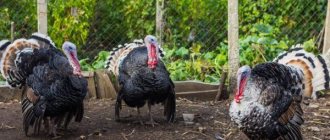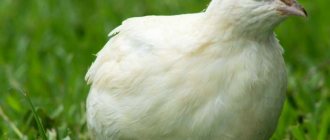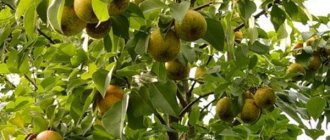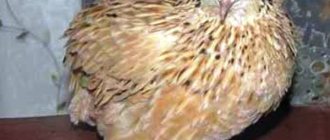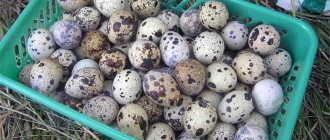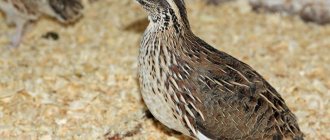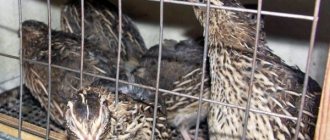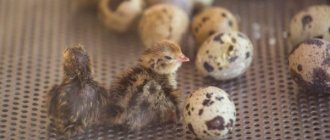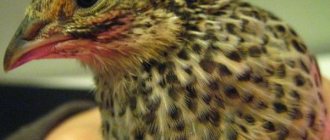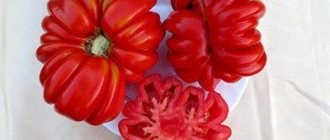Productivity
Pharaoh quail are more than twice the size of their wild relatives, and heavier than their Japanese “parents.” They can be slaughtered as early as two months of age. The pharaohs produce tender, delicious and healthy meat, the yield of which at slaughter is about 72.5%. This product is in constant demand on the market, so there will be no problems with sales.
The young pharaohs grow quickly and gain weight. At the age of one and a half months, females give birth to their first clutch. In the presence of a male, 90% of the eggs, weighing from 12 to 16 g each, appear fertilized. Annual productivity is about 200 pcs. This quantity will be enough for both sales and herd renewal.
Quail eggs contain a minimum of cholesterol and are practically not affected by salmonellosis, so they are no less popular among consumers than gourmet meat.
What to feed?
We recommend reading our other articles
- Additives for laying hens
- Duchess pear variety
- Apple tree grafting
- Raspberry jam
Many breeders who have not previously bred quails have problems with feeding. The pharaoh quail is a simple bird, however, if not fed correctly, it can begin to diarrhea, get sick, and the like. It is important to remember that quails need a balanced diet, otherwise it is useless to keep them.
When buying quails, it is recommended to immediately purchase in the same place the mixture that they were fed for about 1 month in advance. During this time, you can gradually transfer the birds to a different diet; if you do this abruptly, they will begin to get sick or their productivity will decrease.
Feeding quails Pharaoh
The basis of the diet of adults is wheat and chopped corn. There should be no more than 10% of other grains. Mandatory daily supplements include: meal and fish meal. They also give chalk and shells. The young animals are first fed a boiled egg, and later grain or mixed feed is added.
It is recommended to buy special balanced feed for quails. In this case, there should be no problems with the birds’ digestion. They will begin to grow and develop quickly and will soon lay their first clutch. For birds up to 3 weeks, feed PK-5 is purchased, up to 1.5 months - PK-6 and shells, and after 1.5 months - PK-1 or PK-2 with the daily addition of shells.
Quails should always have water in the drinking bowl - they drink a lot. Change it at least 3 times a day.
Formation of the parent herd
Chicks in the first month of life are not separated by sex, but older males and females are kept separately.
To form a parent flock, birds with ideal characteristics are selected for:
- live weight;
- body shape;
- plumage color;
- egg production.
It is these individuals that are capable of producing hatching eggs of the highest category, weighing 16 g. Permissible deviations in one direction or another are no more than half a gram. The parent quails are removed from the technical herd.
The selection of elite livestock begins literally from the first days. From the brood, the strongest chickens are selected, of standard weight and size, without defects in the shape of the body, head and paws. Control selection is carried out after a week, then after another two, and the final selection is carried out at 4-6 weeks of age.
To create an ideal parent stock, the degree of sexual maturity is also important, it should be the same. This is explained by the fact that immature young birds must consume feed that promote growth, and adult birds must consume compounds to stimulate egg production. If you keep them together, you may end up with egg laying too early or puberty delayed.
At the age of one and a half to two months, the parent flock is complete, so eggs can be collected for incubation. After 7 months the birds become less productive and are killed off, replaced by new "parents".
Content
Pharaohs have a calm disposition and are non-conflict. Birds are kept in special cages for quails, but you can build one yourself. One cage should contain 1 male and 2-4 females, then egg production will be consistently at a high level.
When breeding quails, it is necessary to constantly maintain the temperature in the range of 18-22 °C. The optimal humidity level in the poultry house should be kept at 65% . The ventilation system must be designed in such a way that there is a constant flow of fresh air, but excludes the possibility of drafts. It is also extremely important to note that quails cannot tolerate bright sunlight.
For the first 2 weeks, quails are kept in brooders - these are wooden or cardboard boxes with a mesh top. The temperature in them should be maintained within 30-35°C. Lighting should be around the clock. At the age of 14 days, the chicks are transferred to adults.
If you follow all the conditions of keeping, you can even keep quails in an apartment.
Two ways to breed quails at home - from scratch and after purchasing chicks
Read
How to keep quails at home. Recommendations for choosing a breed, housing requirements, diet
More details
We make a quail cage with our own hands. Step-by-step master class, video instructions
Article
Breeding quails from store-bought eggs. Why is this still real?
Read
Quail eggs - beneficial properties for the body and use in cosmetology
More details
Appearance
Description of the Pharaoh breed:
- feather color is brown, with white and black splashes;
- large oblong body on short legs;
- small wings, short tail;
- a black sharp beak and small eyes edged with a gray rim.
A biological feature of quails of this breed is pronounced sexual dimorphism. The plumage on the male's chest is buffy-yellow or reddish in color. Directional inclusions of a muddy tone are scattered on the female's chest. The quail has a larger body than the quail.
Conditions required for quails
So, if the number of quails is small, they can easily be kept in an apartment. To do this, you need to have cages in which they will be located and hatch eggs, and balanced food. In cases where it is not possible to make or buy a cage, the quails are placed directly in the room, separating them with a partition.
A number of other requirements will also need to be met:
- temperature support - 21°C;
- provision of lighting - approximately 17 hours a day;
- maintaining the required humidity level - 60-70%.
Cages with quails are placed on balconies, in storerooms, and on loggias. Of course, for this, the balcony or loggia must be glazed and additionally insulated. This is especially important during winter, when the air temperature should not fall below 16°C. Otherwise, the pets begin to get sick, their feathers fall out, and they practically do not lay eggs. That's why it doesn't hurt to stock up on a heater.
The room in which the birds will live must be constantly ventilated and cleaned. However, there should be no talk about drafts and dampness; they will not benefit the quails.
Breeding history
Quails of the Pharaoh breed were bred by selecting large representatives of the Japanese and English white species. The work was carried out in the mid-60s of the 20th century in the United States by the American A. Marsh.
The main direction of selection is increasing the size of quail carcasses.
Pharaohs were brought to Russian territory from Poland at the beginning of the 21st century.
Work on breed selection has not stopped to this day. With the participation of Manchurian quails, the golden variety of pharaohs was obtained, which has a rich yellow-beige color.
Thanks to Pharaoh quails, a common Estonian species was developed, which is described in the article “About Estonian quails.”
Disadvantages of the breed
According to gourmets, the motley-dark coloring of the plumage of pharaoh quails spoils the commercial color of the carcass. Its meat and skin after processing have an unappetizing dark color, which reduces its selling value.
Another disadvantage of the breed is that quails are demanding in terms of living conditions and quality nutrition.
Due to the small number of “pure” representatives of the breed, crossing of pharaohs with other species is common, which leads to a decrease in the mass of quails.
The main disadvantage of the breed is the complete absence of parental instincts, therefore only the incubator method is used to hatch chicks.
We suggest you familiarize yourself with: Exterior and breeds of dairy cattle
Determining the sex of chicks
Males and females do not have exactly the same coloration. Quails have a plain red or yellow-ochre chest without dots or variegated patches; there is usually a pronounced mask on the head. Quails have an elegant head proportional to the body (in males it is large and powerful). Against the background of the main pale brown plumage, females may have dark brown streaks and inclusions. You can also distinguish the sexes by the area around the cloaca - females will not have noticeable bulges and tubercles, but males have them.
Brooder - for chicks from the moment of hatching until 10 days. Artificial heating in the form of a suspended electric lamp and additional round-the-clock lighting are installed. The floor is covered with plywood and covered with rags or straw. On one side there is a mesh with a cell of 10 by 10 mm. Trays for liquid and dry food and trough drinkers are placed inside the cage. The air temperature in the brooder is 35-37 degrees.
We invite you to read: Megaesophagus in cats, features of the disease and treatment methods
Small quails are very sensitive to cooling: any temperature changes can kill them.
For keeping chicks 10-25 days old, open-type cages covered with mesh are suitable. On the sides the dimensions of its cells are 24 by 24 mm, on the bottom - 16 by 24 mm.
Feeders and nipple drinkers are placed outside as for adult birds.
Quails aged 25-45 days are also kept in open cages. Only the mesh size on the sides is 24 by 48 mm, on the bottom - 16 by 24 mm.
Feeding the chicks
On day 1 - boiled egg, mashed with eggshell.
On day 2 - the same thing, with the addition of 2 g of cottage cheese.
On day 3 - the same thing, with the addition of chopped herbs.
On days 4–7 – ground wheat grains, peas, rice, greens. Boiled fish, cottage cheese, shell and chalk are added to the cereals. As well as crushed cabbage leaves, onion feathers, clover, dandelion, and nettle leaves.
The first feeding of the chicks is carried out no later than 12 hours after their hatching. Feeding frequency – 5 times a day. The daily feed requirement for one chicken is 3-5 g.
At 2-3 weeks, the chicks are transferred to starter feed for quails or turkey poults. Instead of food, you can use homemade mash. Read in detail in the article “Composition of feed for quails”. Feeding frequency – 4 times a day.
From 4 weeks, young animals are completely transferred to food for adult birds, which we described above.
Quails are sloppy birds. Feeders should not be filled to the brim, as birds love to throw food around.
Quail cages
Caring for domestic quails includes arranging their personal space. As already mentioned, there are cases when birds are seated right in the room, fencing off their territory. The most common cages designed for parrots, for example, are also suitable for them. However, if you purchase or make a cage specifically for quails, it will be more convenient for both the birds and their owners.
Make or buy?
Buying a ready-made cage or making it yourself is a personal choice for everyone. If you have all the necessary materials at hand (steel mesh, sheet metal, plywood), a training video and golden hands, then everything will work out.
You can use only one galvanized steel mesh and make a rectangular structure out of it. It is not difficult to calculate the number of cages needed: 4-5 individuals, one of which is a male, can be placed in a cage 20-25 cm high, measuring 30x30 cm.
If there are quite a lot of quails, it is not necessary to place each cage separately. You can use the “rack” method, i.e. put them on top of each other. In another way, this design is called a “cellular battery”; it usually has up to five tiers and is available for free sale.
It is also recommended to divide the “housing” of quails, if there are a significant number of them, into sections using ordinary plywood partitions. These birds also fight, and if there are sections, they can quickly be seated. In addition, partitions allow the young to be separated from the adults.
It is convenient when the bottom of the cage is located at a slight angle of 8-10°. This helps the eggs roll off immediately after being laid, remain clean and undamaged, and also makes the process of collecting them easier (the birds are not bothered).
Arrangement of the cage
The bottom of the cage must be lined with something soft. This can be dry hay, straw, sawdust, etc., although sometimes the bottom is made in the form of a lattice under which a tray is placed. This is done so that the quail feces fall down and the cage remains clean longer.
Sometimes (once every 7-10 days) the birds are given clean sand or ash, in which they happily clean their feathers.
Quails also need drinking bowls and feeders. Nipple drinkers are very popular because they allow the water to remain clean and safe for the health of birds longer (without harmful microorganisms and bacteria). But open ones are also suitable: one piece is enough for 20 birds.
Poultry housing should not be allowed to become heavily polluted. The bedding is changed as soon as it becomes dirty, the containers for feeding and drinking are cleaned and disinfected. If possible, cleaning is carried out daily, then you won’t have to worry about any smell.
Breeding rules
To breed birds of this breed, it is recommended to use an incubator. This helps produce meat and eggs and also increases the number of birds. Experts advise not putting many eggs in the incubator. This will help increase the hatchability rate of the birds.
For breeding, it is permissible to use only fresh eggs that were laid no more than 1 week ago. They should be purchased from breeders or specialized farms. The chicks hatch in approximately 17 days. It is recommended to turn the eggs in the incubator regularly. This should be done at least three times a day.
See also
Description of Texas breed quails and their breeding at homeRead
Temperature is of no small importance. During the first 10 days, the parameters should be +38.5 degrees, in the last week they are reduced to +38. On the very last day and during hatching, it is worth maintaining the temperature at +37.5 degrees. The birds are hatching en masse. It literally takes 10 hours for quails to emerge. Chicks that hatch after 12 hours should not be left behind. They almost always die.
To keep chicks successfully, it is important to monitor the temperature. In the first few days it is worth maintaining the parameters +30-35 degrees. It is recommended to gradually reduce them over the course of a month. As a result, it is worth reaching the mark of +25 degrees. For 2 weeks, quails require round-the-clock lighting, after which the duration of daylight hours is reduced to 17 hours.
